Wonderful pictures with migratory and wintering birds. What birds remain wintering in their homeland, and which are flying away?
Content
- Disading, wintering birds: list, photo with names
- Migratory, nomadic birds: list, photo with names
- What is the difference between migratory birds and wintering: presentation for preschoolers
- Why do migratory birds fly into the warm edges where they winter, why are they returning back?
- Do the migratory birds in the south curl nests?
- What birds arrive first and last in the spring?
- What birds fly the first and last in the fall?
- What kind of migratory birds promise snow?
- What bird from the Kurotny detachment is migratory?
- Video: How do migratory birds fly?
Walking through the park or forest, we listen to bird singing and often just do not think about which bird so gloriously removes trill. There are birds that live in our area all year round, but there are those who fly away to the "warm lands" in the fall.

The fact is that in winter it is very difficult for birds to find food, because insects, berries and grains are becoming few, and when snow falls, it is almost impossible to find them at all. And different types of birds solve this problem in different ways: migratory birds fly hundreds and even thousands of kilometers to warmer countries, and sedentary ones adapt to our harsh winter.

Disading, wintering birds: list, photo with names
To help the birds who remained to winter, find food, hang feeders. And it is possible that they will interest such visitors:
- Sparrow. Noisy sparrows that fly flocks may well be the first visitors to the feeder.

- Tit.Tits are in many ways not inferior to sparrows, they quickly rush to feed in feeders. But compared to sparrows, tits are endowed with a more meek disposition. It is interesting that in the summer the tit is eating almost as much food as she weighs herself. Often in the feeders you can observe mixed flocks, consisting of both sparrows and a blue.
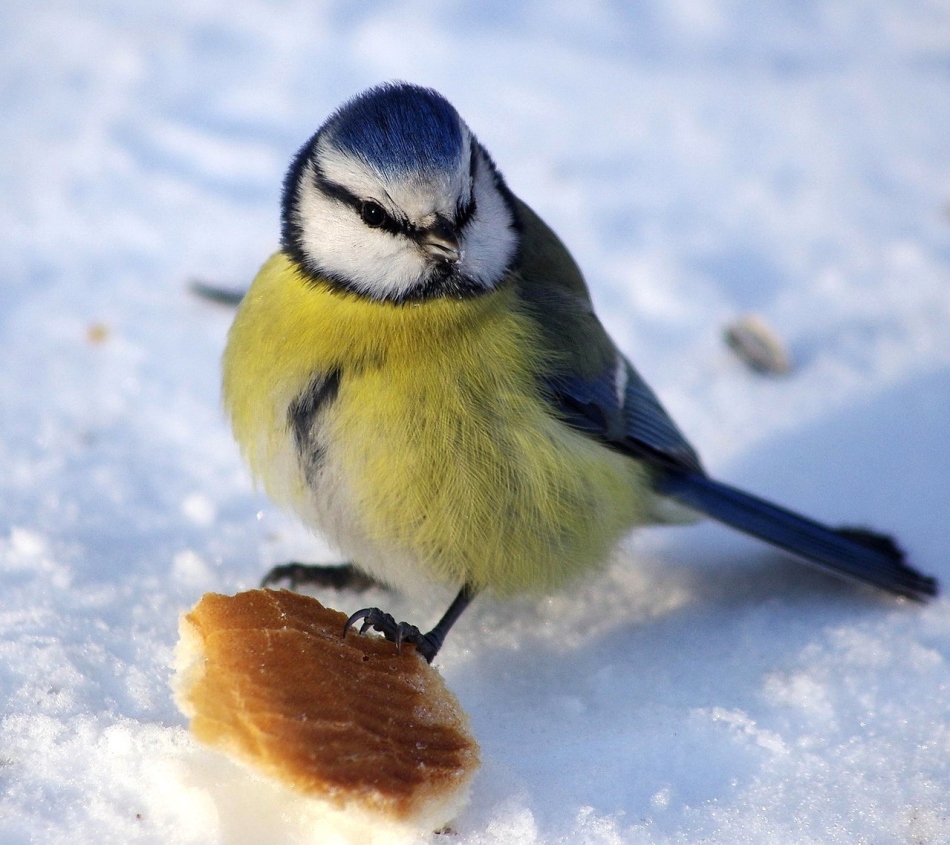

- Gaika. A close relative of the tint. However, the breast of the nut is not yellow, but light brown. The traffic police also differs from other tits in that it makes hollow in a tree to make a nest in it.

- Crow. The raven is often confused with rooks. It is known that in the western part of Russia, crows are very rare. Therefore, if you live in the European part of Russia and see a black bird, which emits piercing croaking, then most likely, in front of you is a rook.

- Pigeon.The spread and lifestyle of pigeons was largely influenced by people who simply brought them with them to different corners of the earth. Now pigeons are found on all continents with the exception of Antarctica. Pigeons easily change the rocks, which are a natural environment of their habitat, created by man for buildings.

- Woodpecker.In the warm season, the woodpeckers feed mainly at insects, which they get from under the bark of trees, and in a winter cold, they can eat plant foods: seeds and nuts.

- Magpie. Magpie is considered a bird with high intelligence, it is able to express a lot of emotions, including sadness and knows how to recognize its reflection in the mirror. Interestingly, to the disturbing cry of the magpies, not only her brothers react, but also other birds, as well as wild animals, in particular bears and wolves.
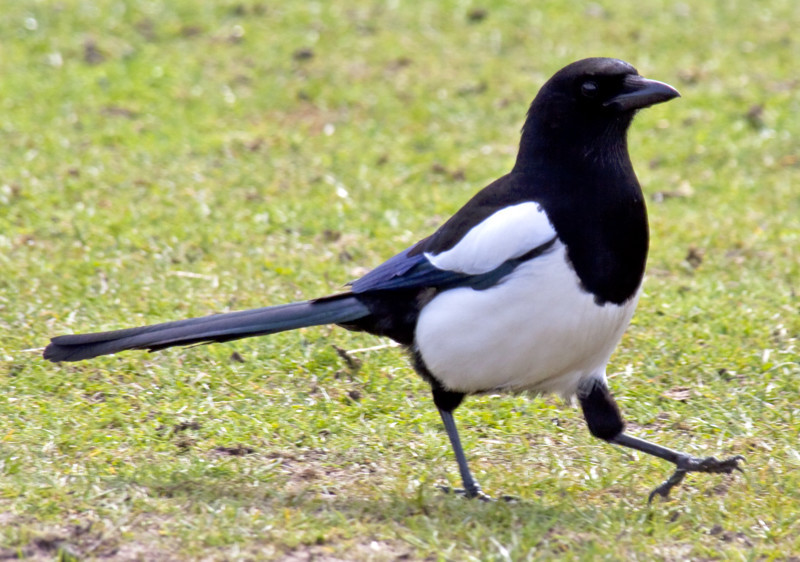
- Owl. Owls are different, large and small, there are more than 200 species in total. These birds are endowed with sharp vision and excellent hearing, which allows them to lead a night lifestyle. It is interesting that the brushes on the head of the owls are not ears, the real ears of the owls are hidden in feathers, and one of them is directed upward, and the other down to better hear what happens above the head and on the ground.

- Owl. This bird is also considered an owl and is a close relative of other owls.
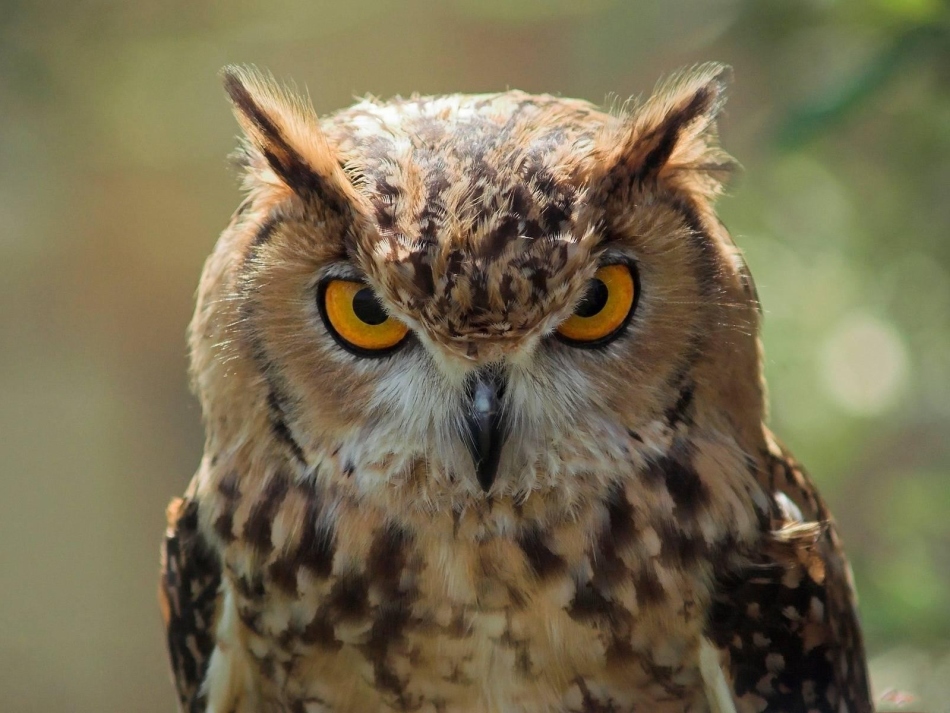
- Inquires. A rare owl that lives mainly in the mountainous areas in the northern latitudes. The name of the bird according to different versions means “inedible” or “insatiable”.
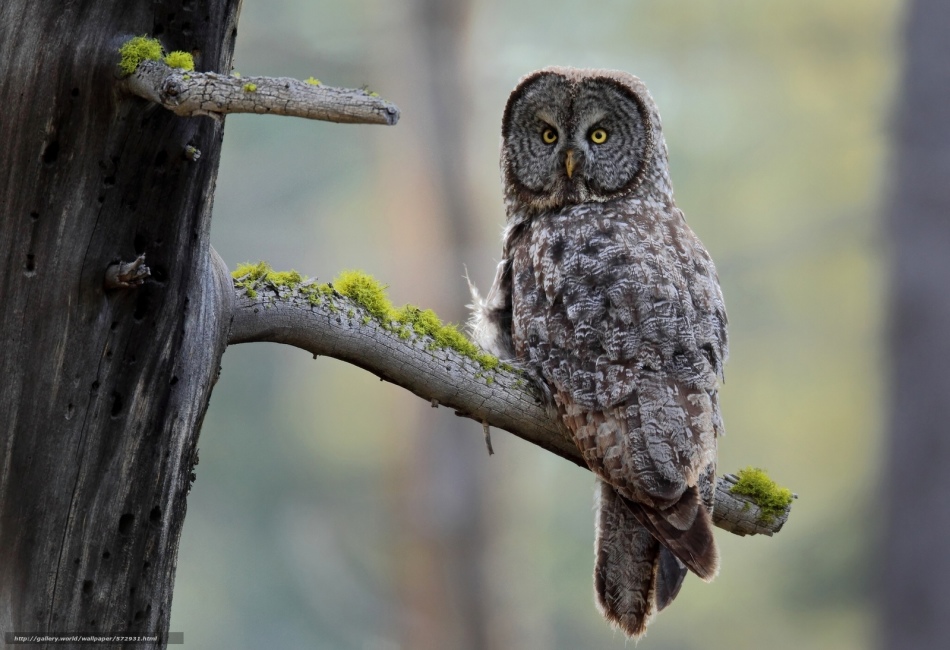
- Galka.Outwardly, Galka is similar to rooks and raven, moreover, there are mixed flocks in which you can see all three species of birds. However, the daw is smaller than the raven in size. And if you are lucky enough to watch Galki near, then you can easily recognize it by the gray color of part of the feathers.
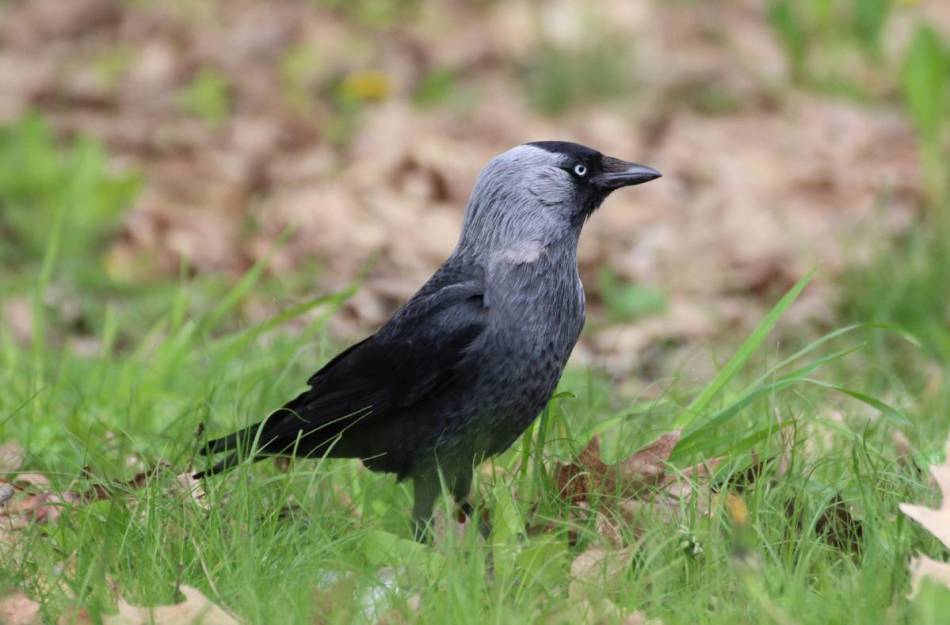
- Nuthatch. This little bird is very clever climbing the trunks of trees. In the summer, seeds and nuts are hidden in the summer in the summer, and in winter they feed on these supplies.
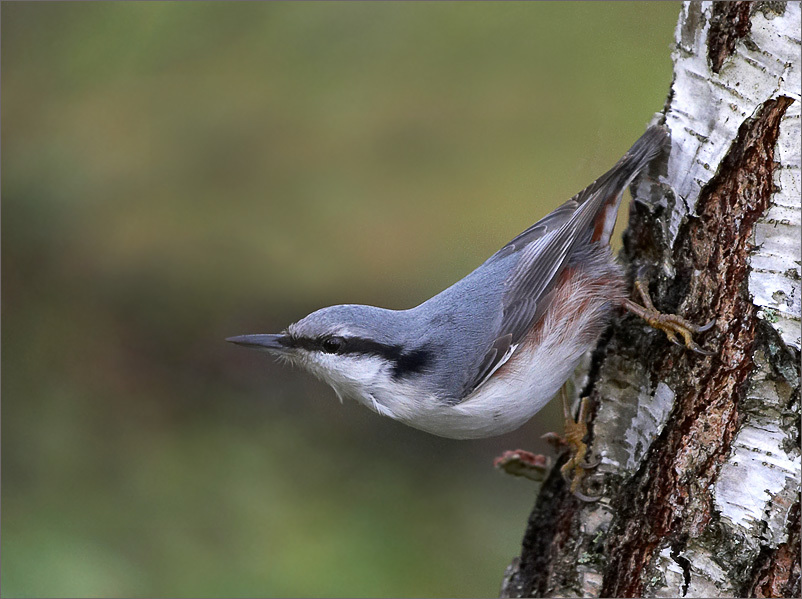
- Crossbill. Like creep, this bird climbs trees perfectly and knows how to hang upside down on the branches. Favorite food of Kleta is seeds of spruce and pine cones. This bird is notable for the fact that it can withdraw chicks even in winter, but only if there is enough food.
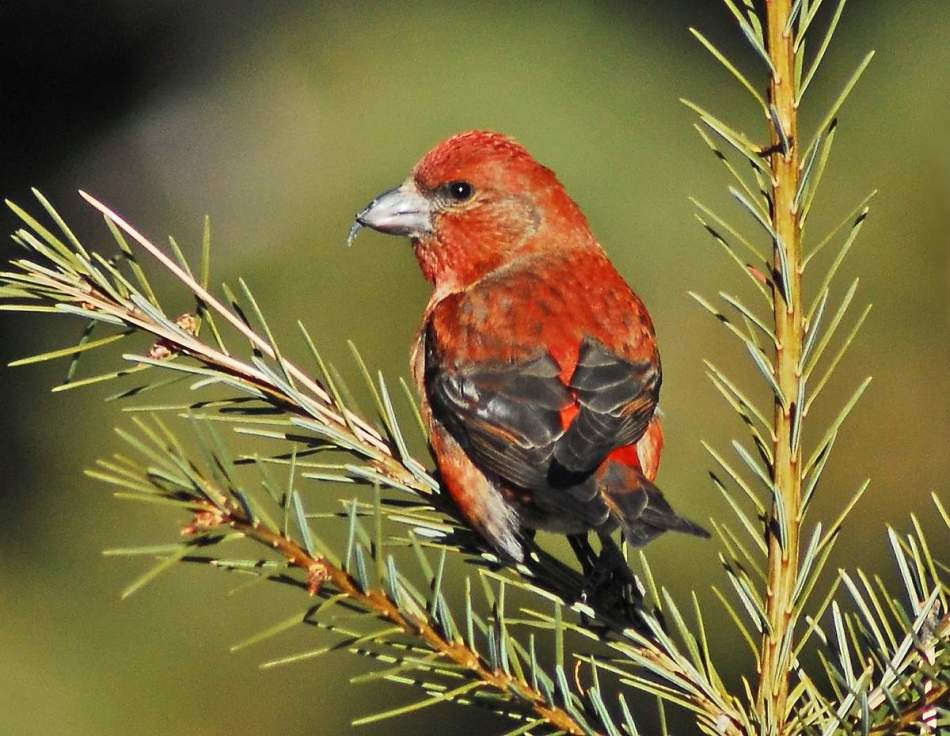
- Bullfinch. Only males have bright red plumage on the chest, females look much more modest. Bullfires are more often met in winter, since due to lack of food, they reach for people. In the summer, bullfinches prefer a wooded area and behave inconspicuously, so it is not easy to see them.

- Waxer. A bird with a beautiful plumage and a singing voice. In the summer he feeds mainly with insects and loves to settle in coniferous forests. In winter, the Waxworm moves to the southern regions of the country, it is often found in cities. In the cold season, the main food of the bird becomes mountain ash and other fruits.
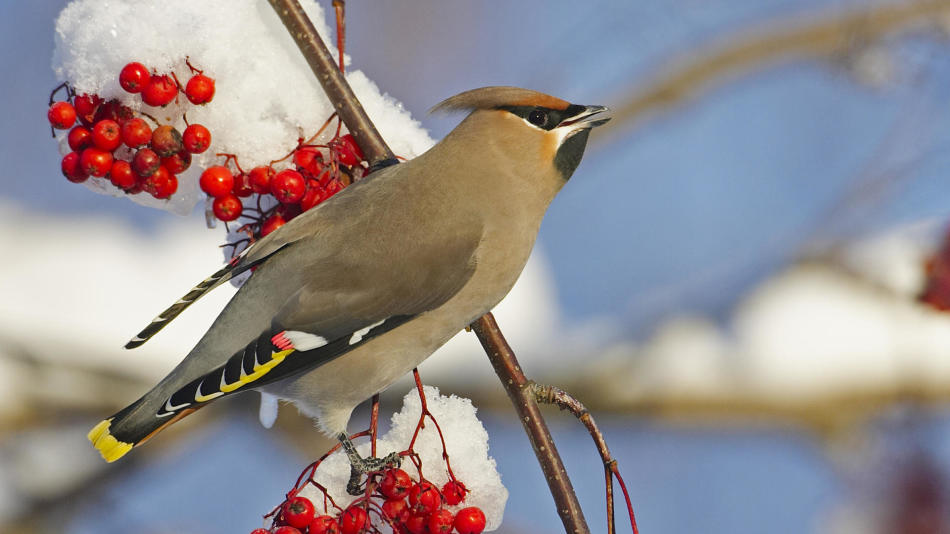
- Jay. A large bird, which, however, may fly to enjoy a feeding trough hanged by people. In the summer, in the city it is rarely greeted, but closer to winter the bird begins to reach for human housing.
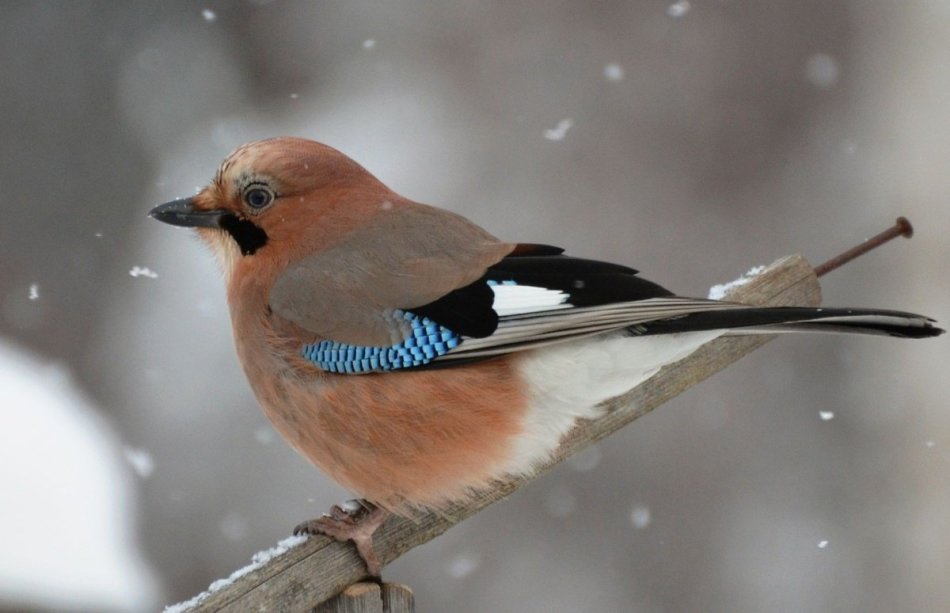
- Korolek. One of the smallest birds, the weight of an adult male is only 5-7 grams. Kings are relatives of sparrows.

- Pheasant. A large bird, which is a favorite trophy for many hunters. Pheasants know how to fly, but more often move on foot.
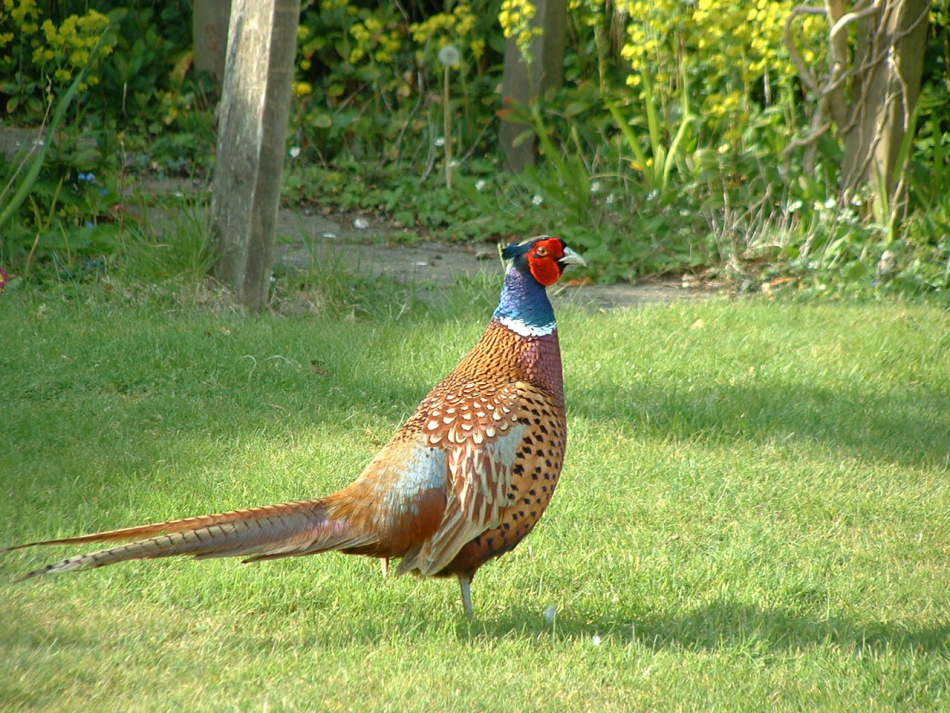
- Grouse. It is also an object of hunting fishing, despite the fact that this bird is quite small. The weight of an adult hazel grouse rarely reaches 500 g. It is interesting that the largest population of these birds live in Russia.
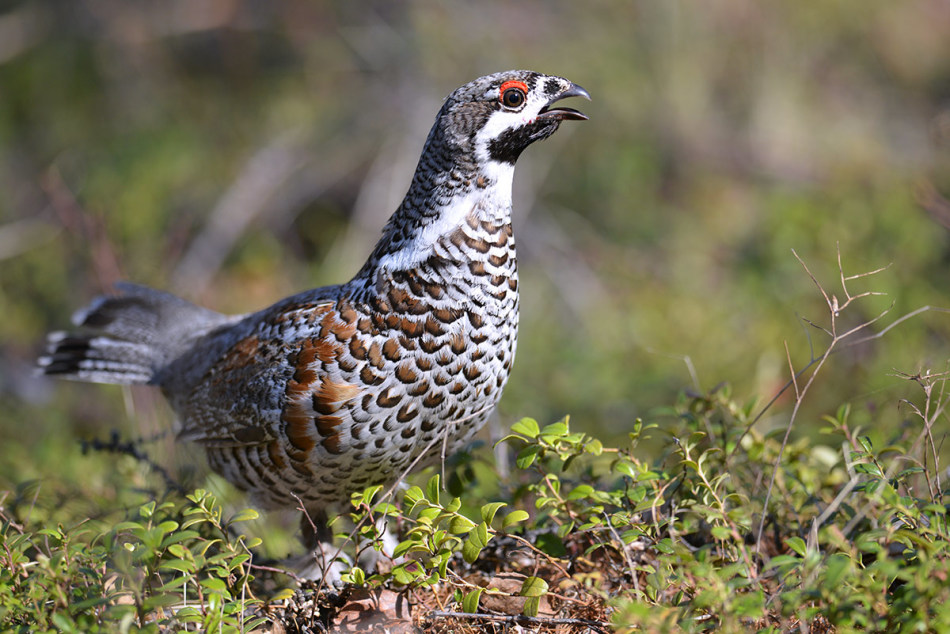
- Teterev. Another bird that is related to hunting fishing. A grouse on the edge of the forest and in the forest -steppe are found.
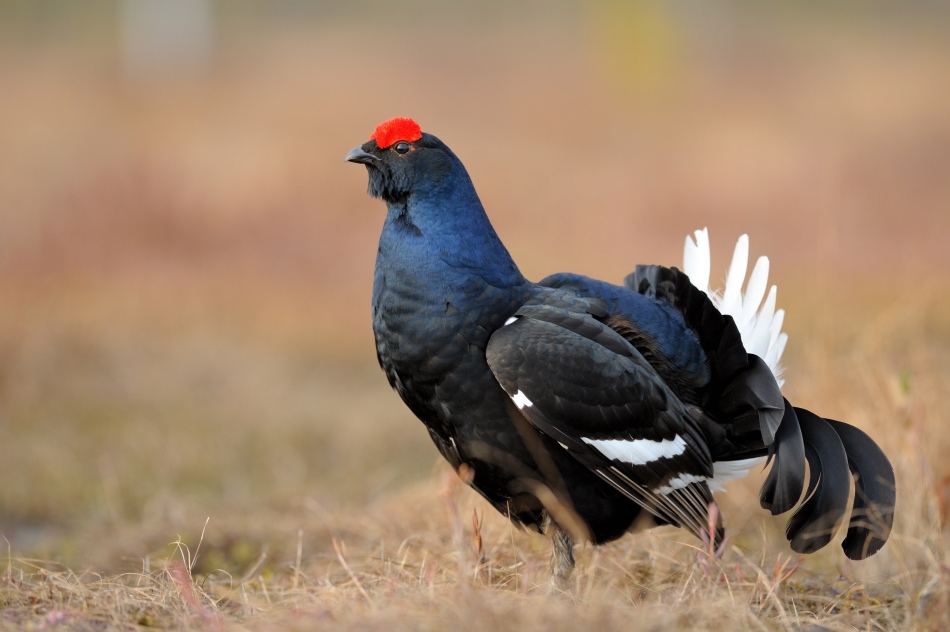
- Falcon. It is considered one of the smartest birds on the planet and one of the best hunters. The falcon is able to work in tandem with a person, but taming him is very difficult.
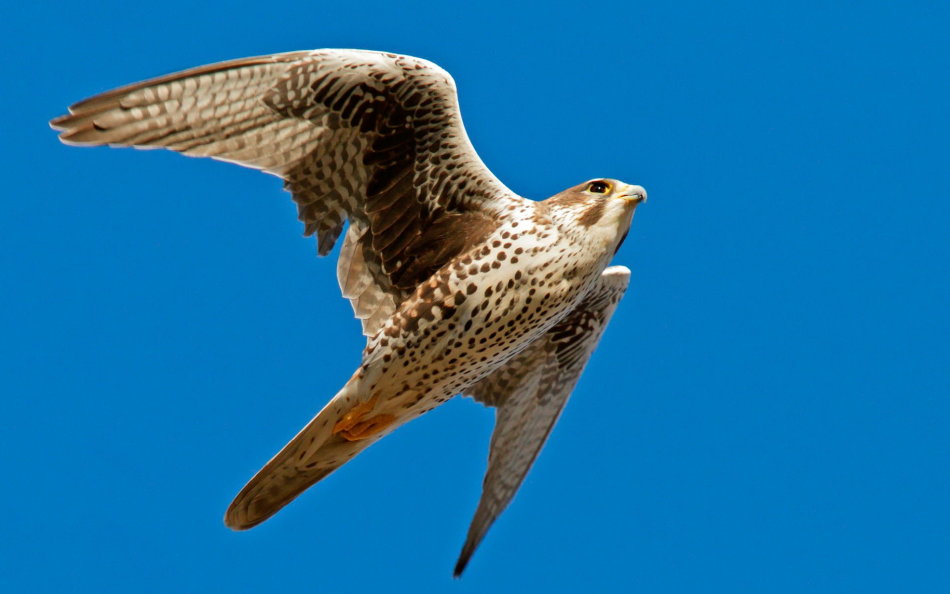
- Hawk. Like a falcon, it is a predatory bird. The vision of the hawk is 8 times more acute than human. And having rushed for prey, the hawk can develop speeds to 240 km/h.

Migratory, nomadic birds: list, photo with names
- Rook.Rooks differ from the raven of a gray-yellow beak. In the Kuban and Ukraine you can see how, in the fall, rooks gather in huge flocks, so large that the sky seems black from the birds soaring in it - these are rooks that fly south. However, rooks relate to migratory birds only conditionally, some of them remains to winter in the middle lane, some winter in Ukraine, and only some birds fly to the warm shores of Turkey for the winter.
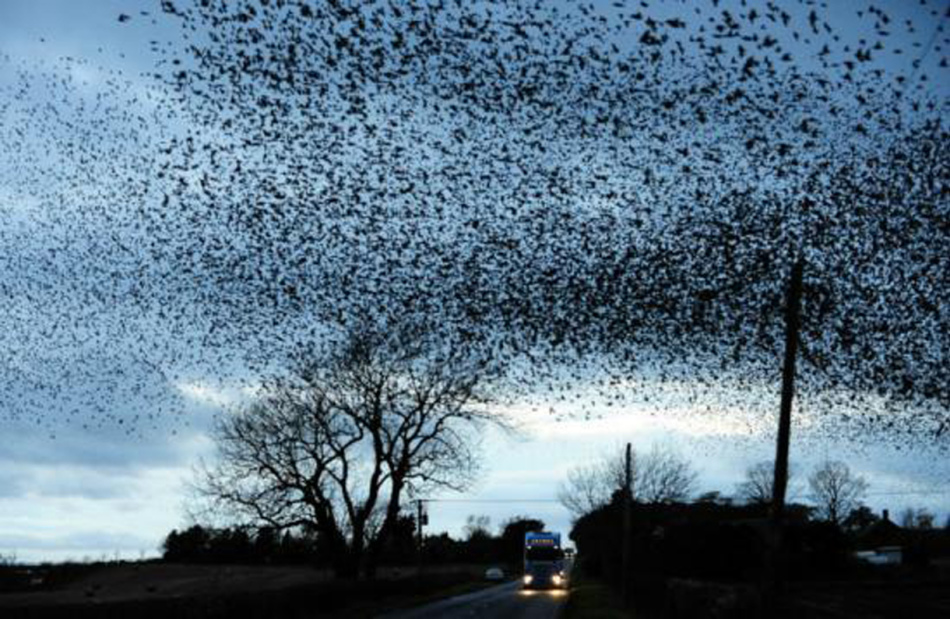
- Rooks They love to fly on freshly sprinkled land, sometimes they fly right behind the plowing tractor in order to have time to get out of the erased land, as many worms and larvae as possible.
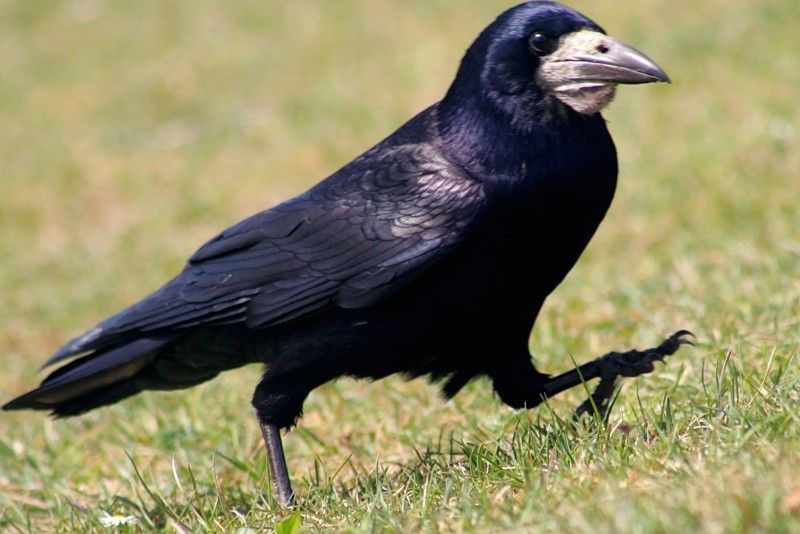
- Nightingale.This inconspicuous bird with a singing voice loves warmth, and therefore flies south in the fall. And for wintering, our native nightingales chose hot Africa. These birds fly to winter in the eastern part of the continent - Kenya and Ethiopia. However, local residents cannot enjoy their singing, because nightingales are singing only in the marriage period, which passes in their homeland.

- Martin.Swallows love a rocky area, they often settle on the sheer walls of the quarries that people dug up. However, our winters are too harsh for swallows and therefore in the fall they fly to the southern, far from us, part of Africa or to tropical Asia.
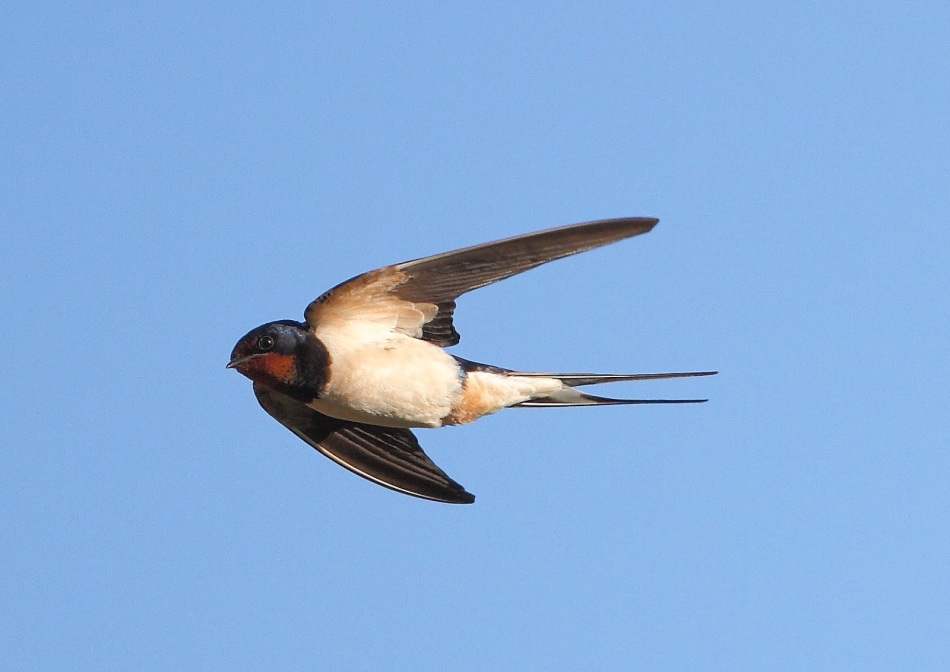
- Chizh. Like the rook is a migratory bird, which flies early and winter not far: in the Caucasus, in Kazakhstan and in southern Europe. Outwardly, Chiji are inconspicuous, their gray-green feathers are absolutely not striking against the background of branches. The disposition of the bird to match the appearance: quiet and meek.

- Goldfinch. In Europe, this is a wintering bird, however, in Russia, Scheglov can only be seen in the summer. By winter, chogles gather in flocks and go to the lands with a warmer climate. Schegly close relatives of Chizya.
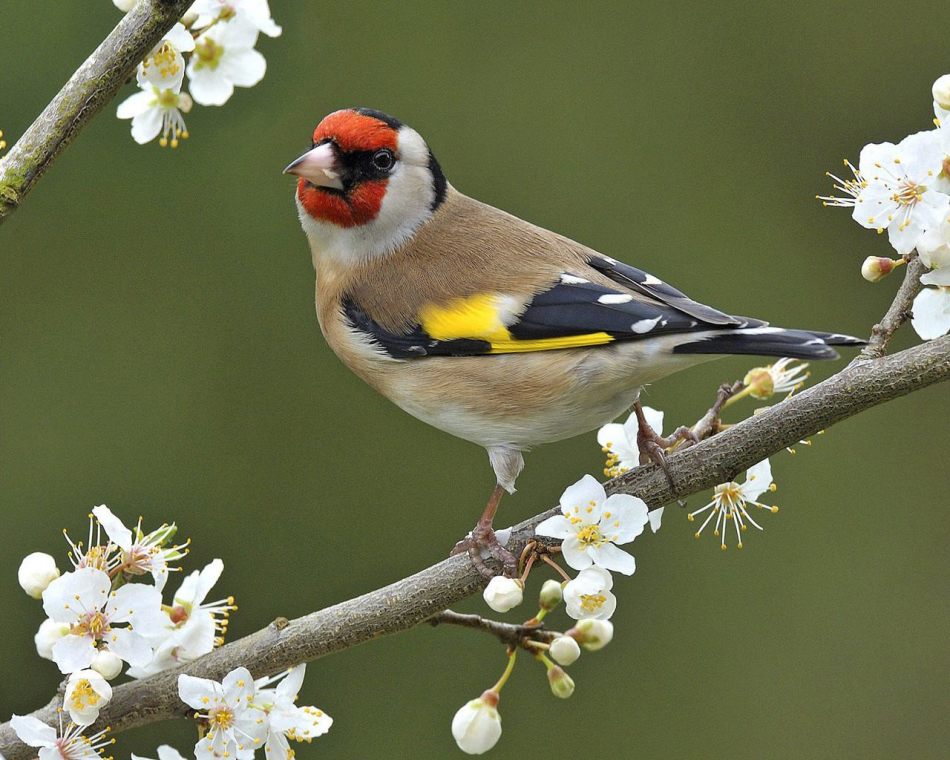
- Wagtail. A slender bird that quickly runs on the ground and at every step shakes the tail. Waggers are held in East Africa, South Asia, and sometimes in southern Europe.
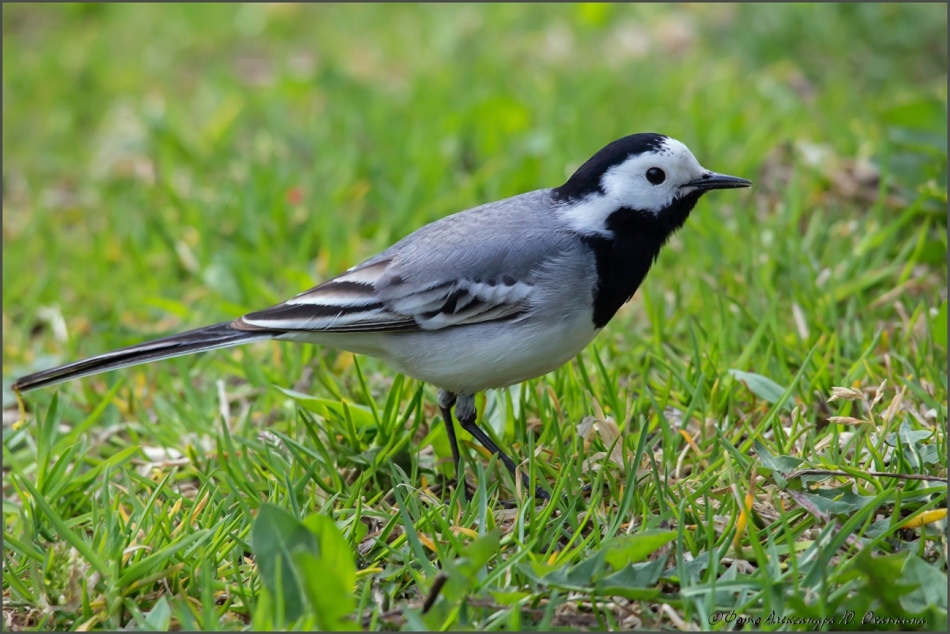
- Quail. The only bird from the Kurotny detachment that is migratory. The weight of the adult quail is not so great and is 80-150. In the summer of quails can be found in the fields sown with wheat and an rye. The quails are wintering far beyond our homeland: in the southern part of Africa and in South Asia, on the Hindustan Peninsula.
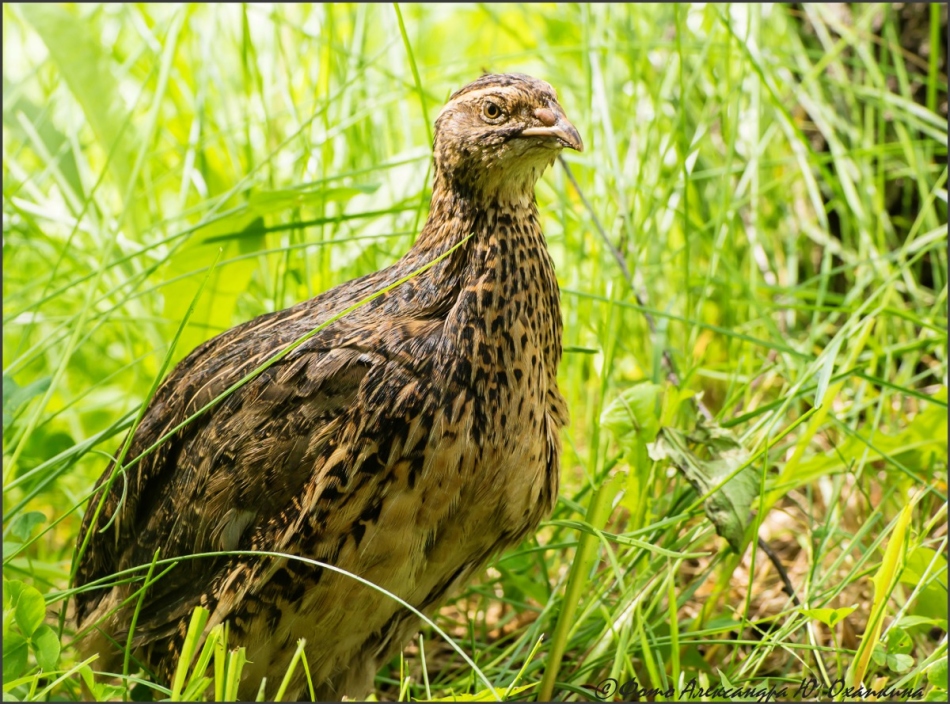
- Thrush. The singing throws creates a decent competition with his sweet tricks. And his appearance, like the nightingale, is inconspicuous. In winter, Drozds become Europeans: Italy, France and Spain - their second homeland.
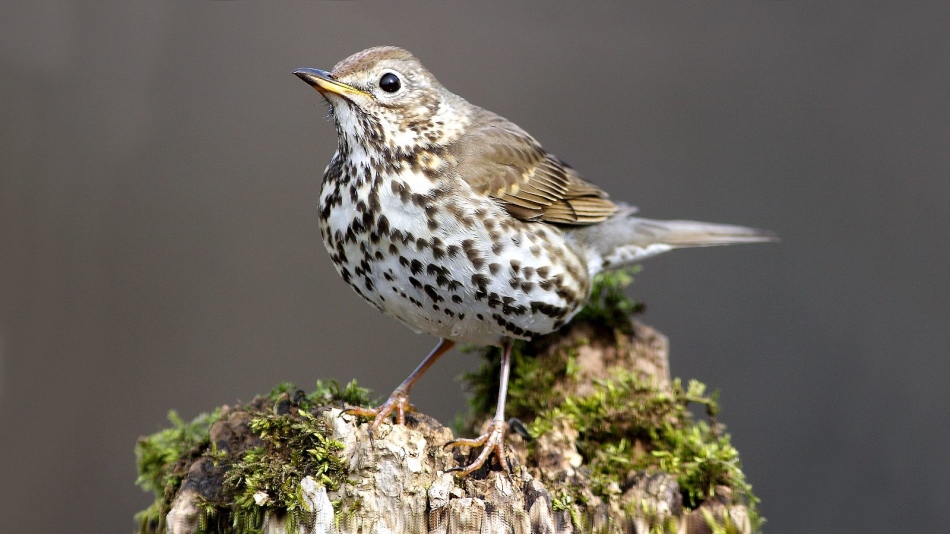
- Lark. The larks return from warm countries very early, sometimes already in March you can hear their sonorous song, which becomes a harbinger of spring warmth. And the larks winter in southern Europe.

- Gull. With the onset of cold weather, seagulls living on the coasts of the northern seas migrate to the Black and Caspian seas. But over the years, seagulls are more and more drawn to people, and more and more often remain wintering in cities.

- Swift. Swifts winter in Africa, and they reach its equatorial part or even go to the southern part of the mainland.

- Starling. Squorses very much need vomiting houses, since most often they bring off offspring in them. And our starlings go to South Europe and East Africa to winter.


- Finch. The finches from the western part of the country are wintered mainly in Central Europe and the Mediterranean, and the finch, living near the Urals in the summer, go to the Southern Kazakhstan and the southern regions of Asia.
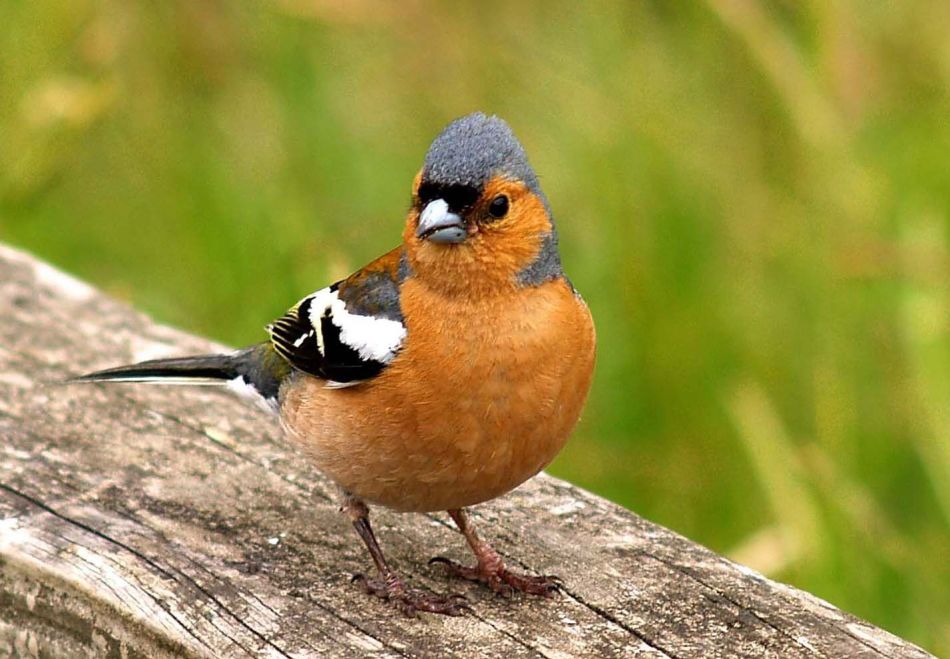
- Heron. It is quite difficult to determine where it winter, some of them overcomes huge distances to South Africa, part of the winter in the Crimea or in the Kuban, and in the Stavropol Territory of heron, sometimes they even remain winter.

- Crane. These birds are monogamous, and once choosing a partner, they have been loyal to him all his life. Cranes settled in a marshy area. And the places of their wintering are as diverse as that of the heron: Southern Europe, Africa and even China - in all these parts of the world you can find cranes who flew from Russia to winter.
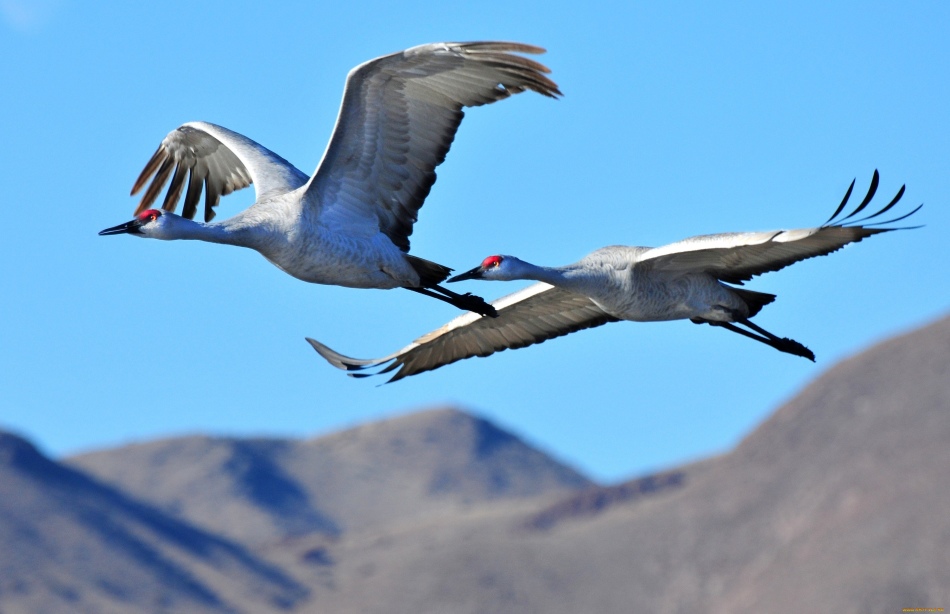
- Stork. In Russia there are black and white storks. White storks drive huge nests, the width of which is up to one and a half meters, and make very long flights to the south. Sometimes they overcome the floor of the planet and reach South Africa - a country that is located in the very south of Africa.
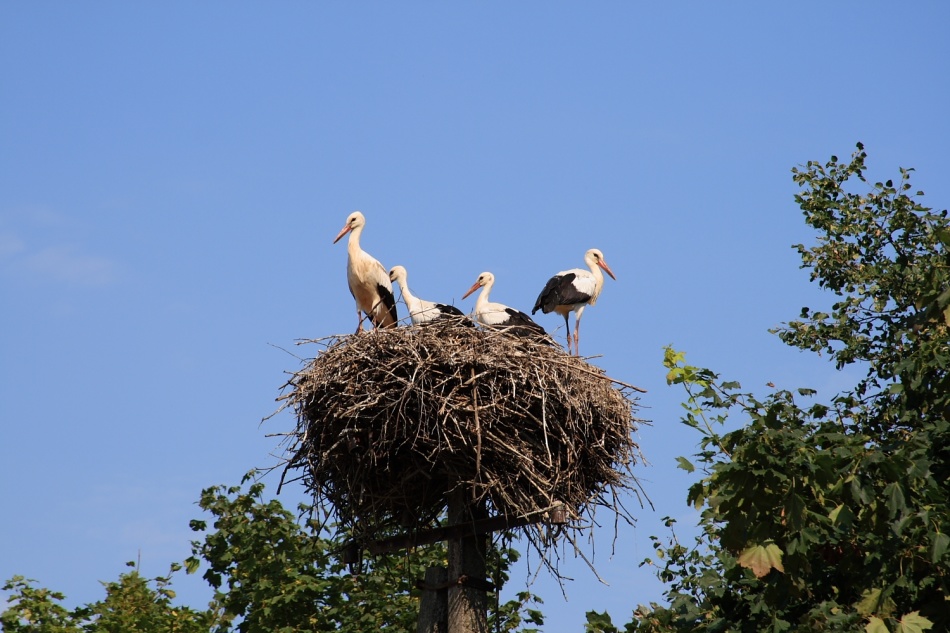
- Swan. Swan is a bird personifying devotion and romance. Swans relate to waterfowl, therefore, for wintering, they choose places near the water, often it is a Caspian or Mediterranean Sea.
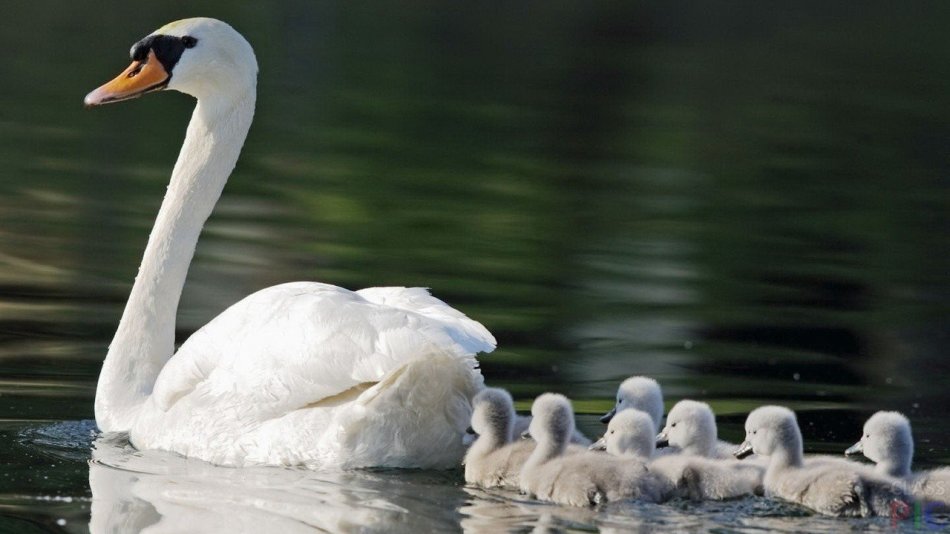
- Duck. Wild ducks in winter, as a rule, do not fly far and remain in the vastness of the post -Soviet states. It is noteworthy that their homemade relatives also begin to worry in the fall and sometimes try to fly away, sometimes they even fly fence and fly off minor distances.
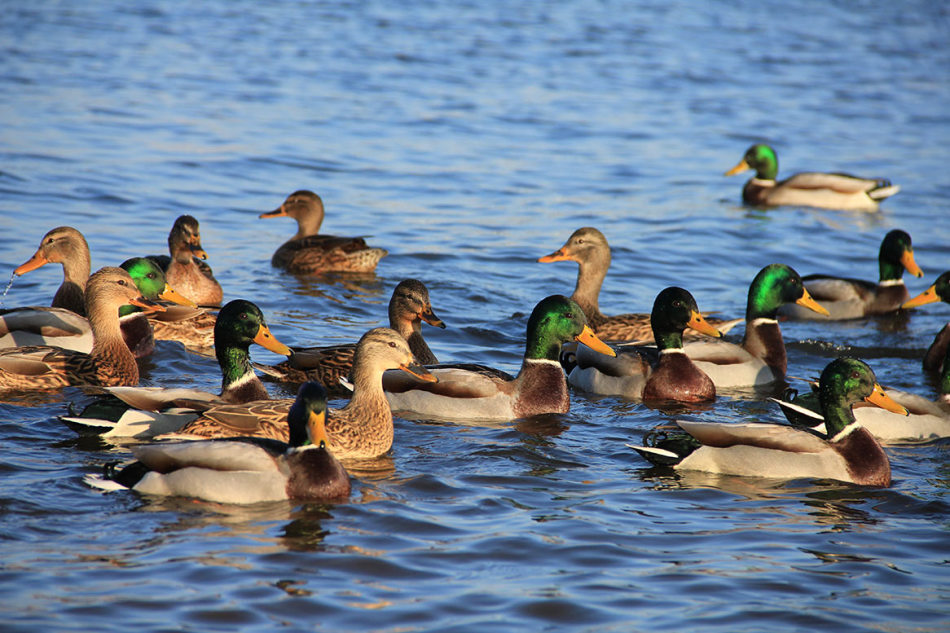
- Cuckoo. The cuckoos settle in the forests, and in the forest -steppe, and in the steppe. The vast majority of cuckooes fly away to winter in tropical and southern Africa, less often cuckoos winter in South Asia: in India and China.
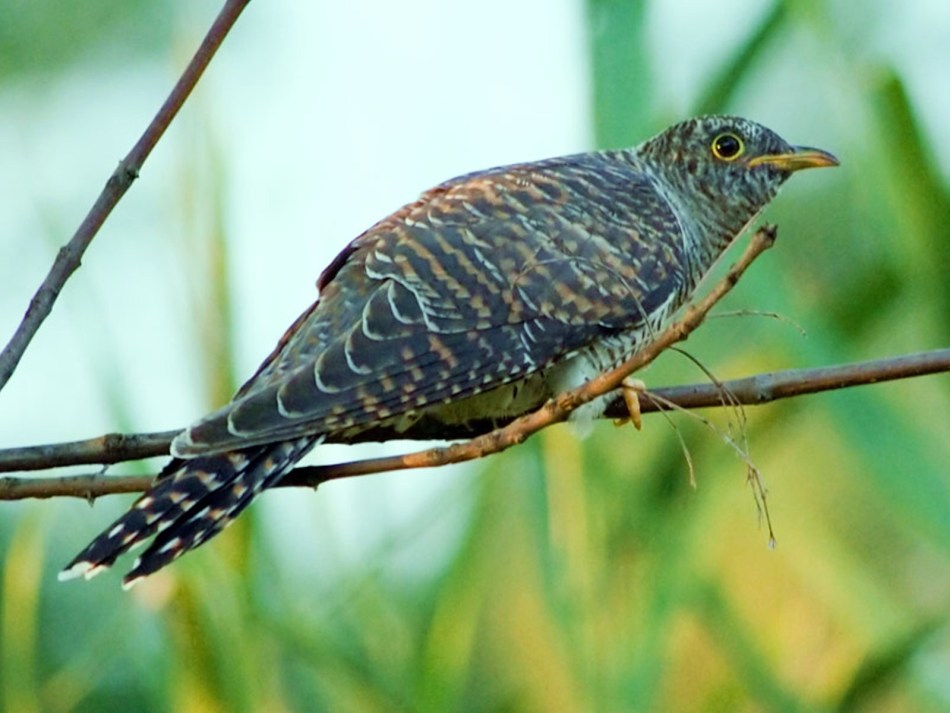
- Oriole. A small bird with a singing voice and bright plumage, which flies to winter in the tropics.
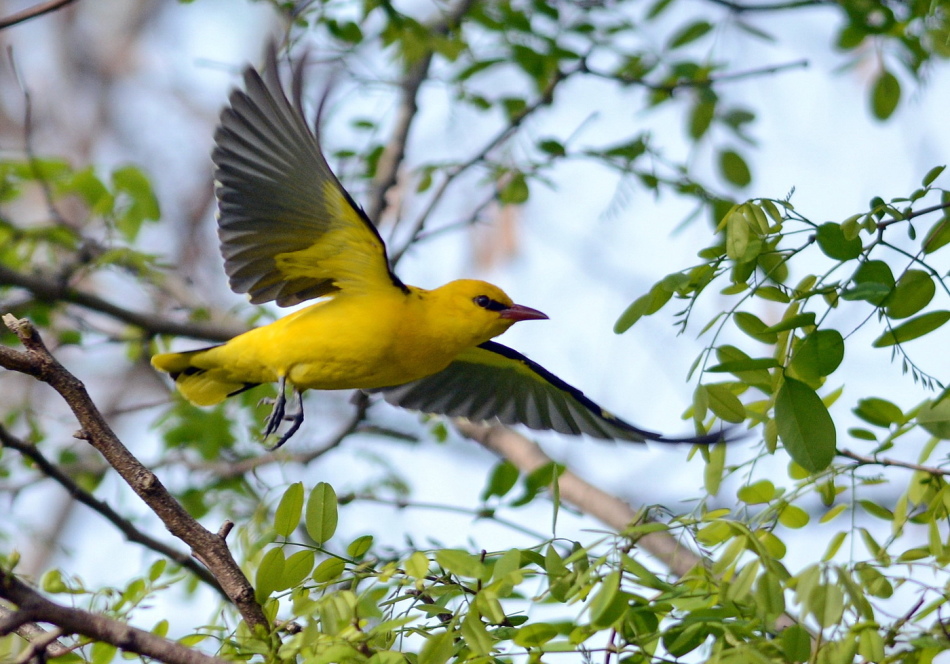
- Zaryanka. They wake up at dawn and the first to start the morning song. Previously, this little singing bird was called a raspberry. Zystyanka fly to southern Europe, North Africa and the Middle East, returning home among the first.
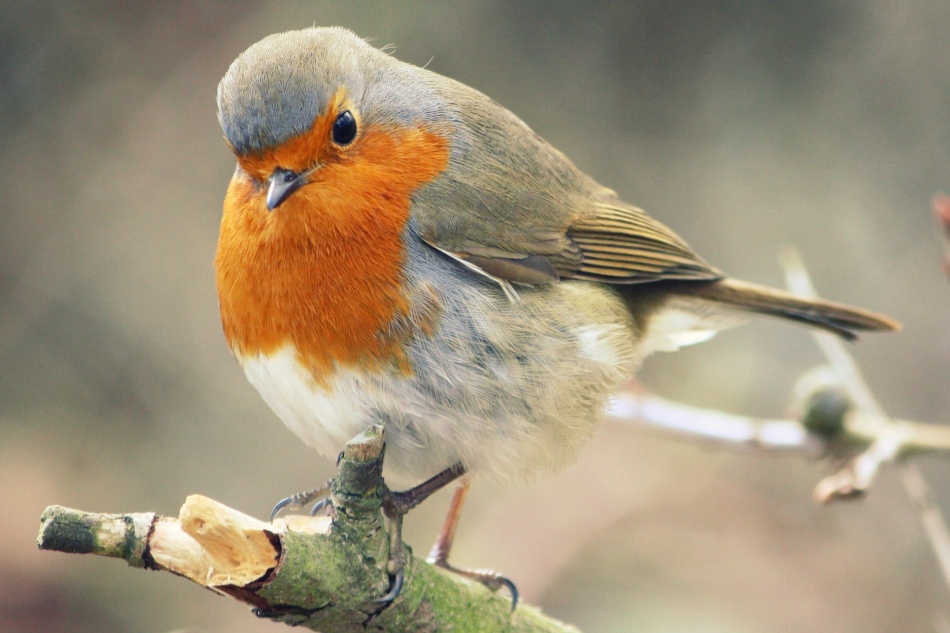
What is the difference between migratory birds and wintering: presentation for preschoolers

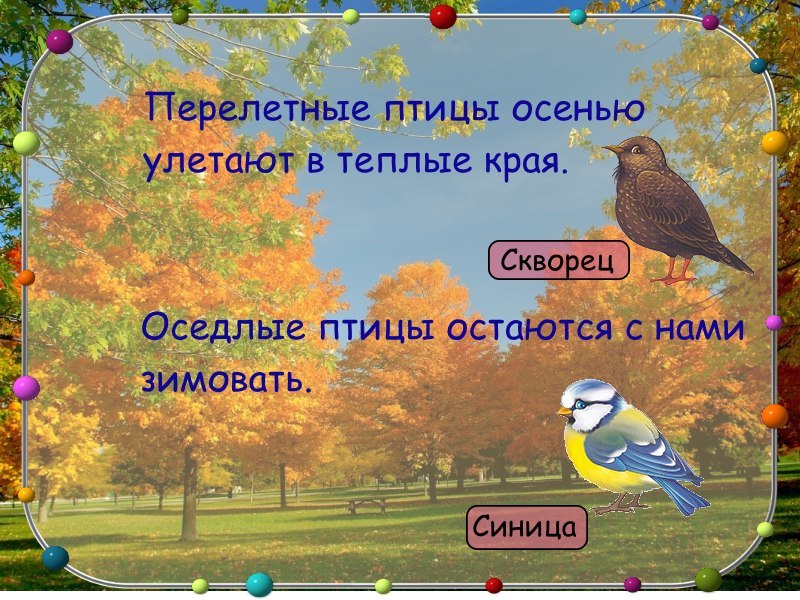
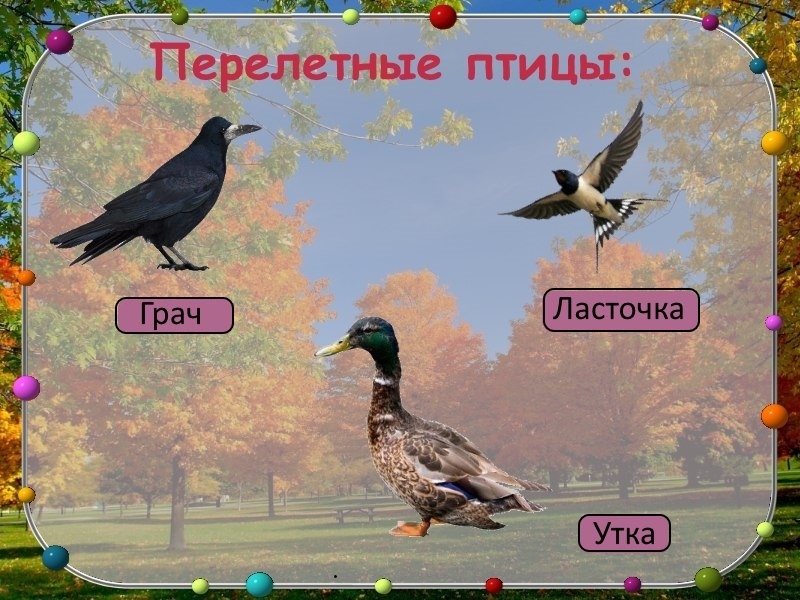
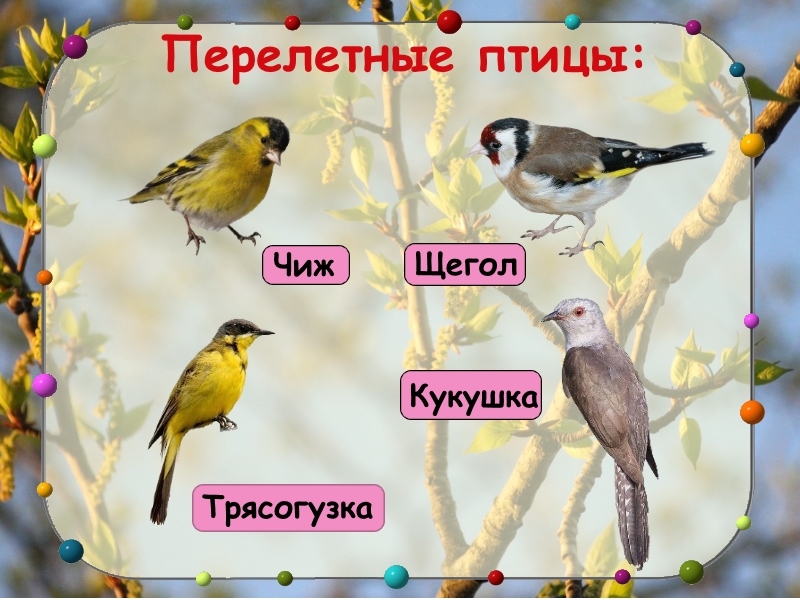
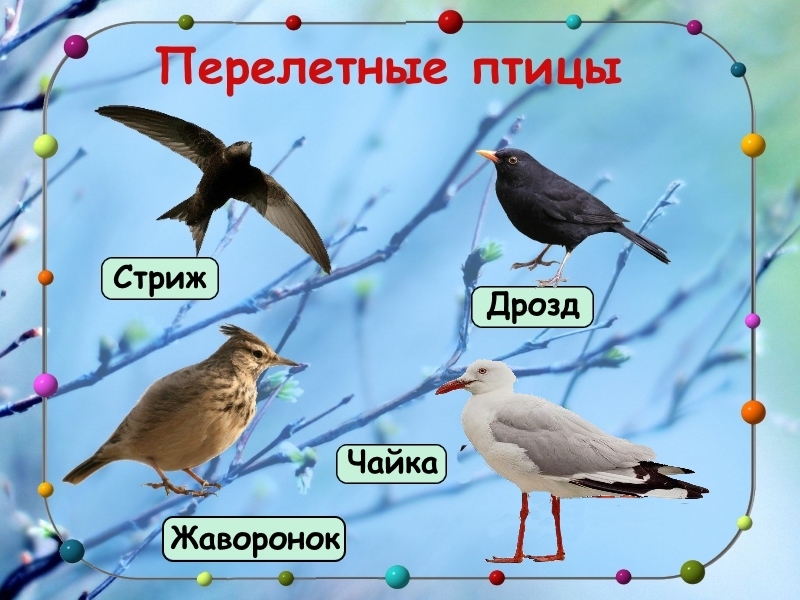
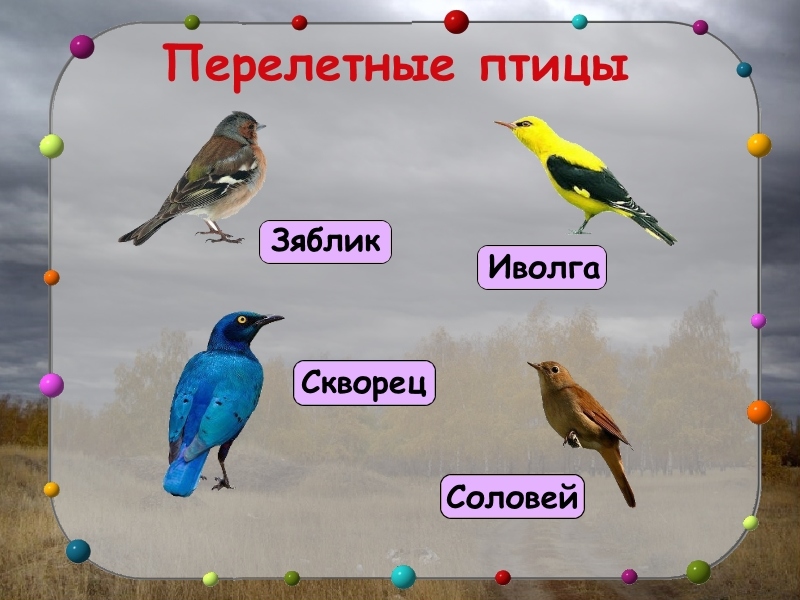

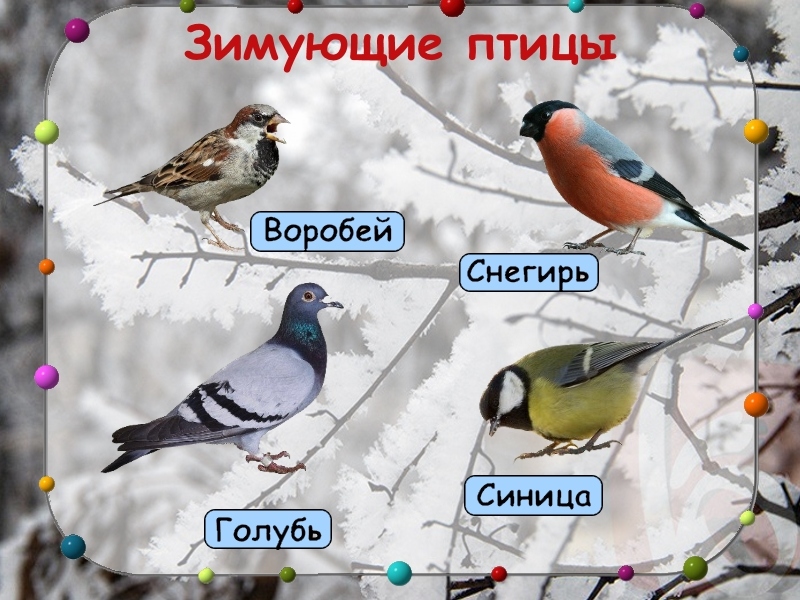

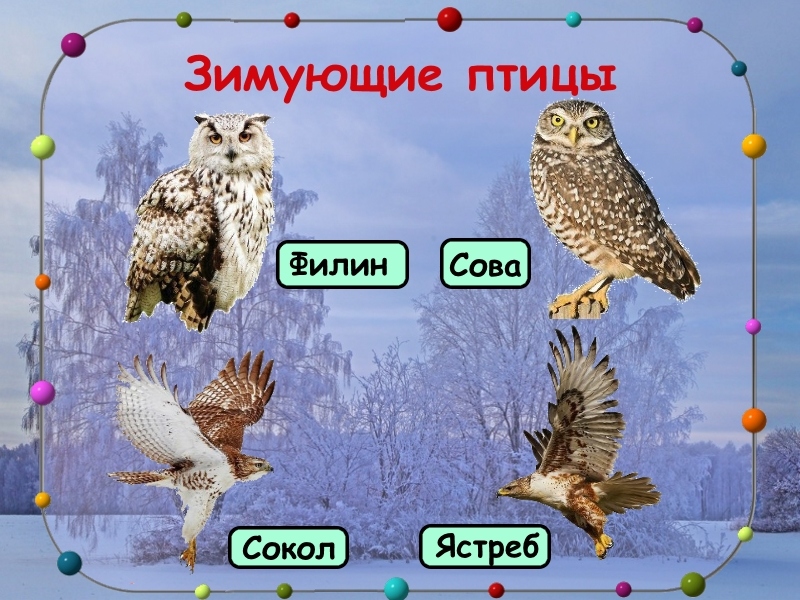
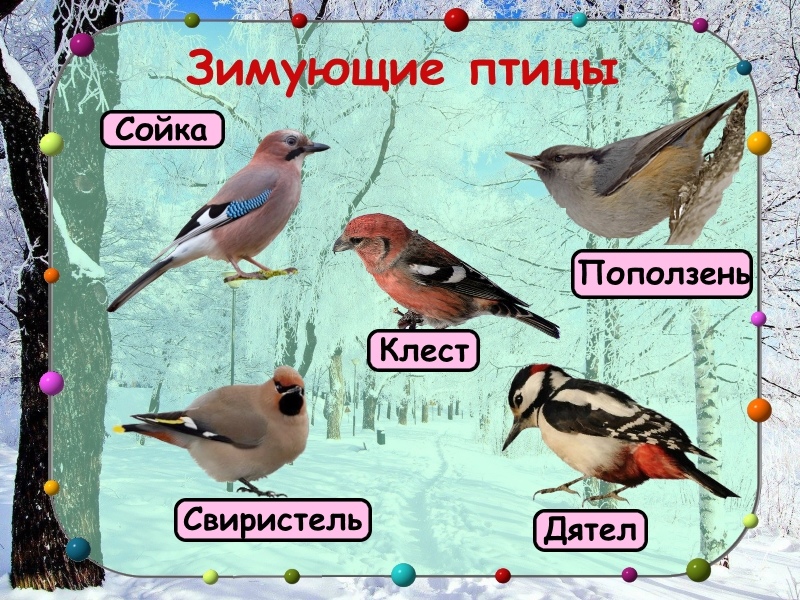
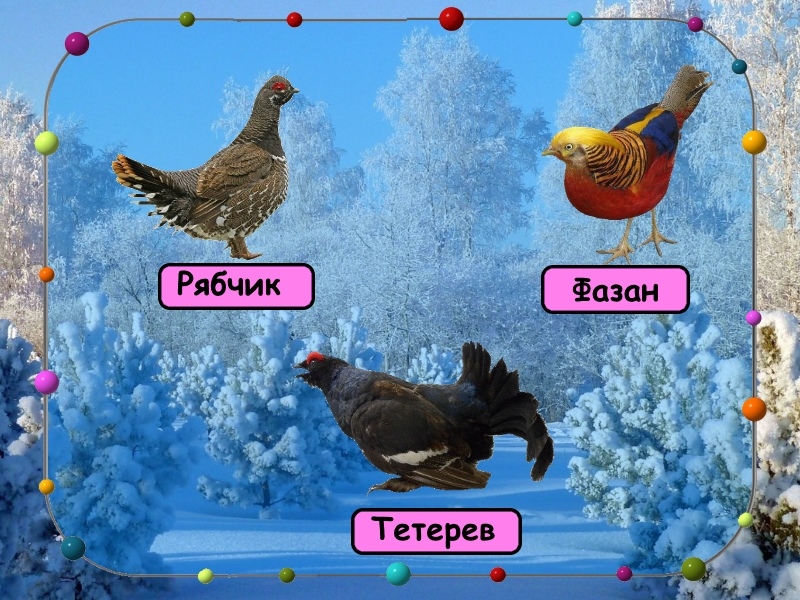
Why do migratory birds fly into the warm edges where they winter, why are they returning back?
Winter is a harsh test for birds. And only those that in harsh conditions can get food remains to winter.

What can be the ways of surviving birds in the cold season?
- Some birds stock up food in the summer for the winter. They hide the seeds of plants, nuts, acorns, caterpillars and larvae in the grass and cracks on the bark of trees. Such birds include creep.
- Some birds are not afraid of people and live near residential buildings. In winter, they find food in feeders and garbage heaps.
- Some birds are predators and feed on rodents. There are predatory birds that can eat hares, hunt fish, small birds and bats.

If a bird can find food for herself in winter, then she does not need to go in the fall to a tedious and difficult flight to the warm edges.

It would seem that everything is simple, and the only reason for the seasonal migration of birds is the lack of food. But in fact there are more questions than answers. For example, imagine that a wild duck, which is a migratory bird, provided a pond with artificial heating and a sufficient amount of food. Will it stay winter? Of course not. She will call her on a long journey, a strong feeling that is difficult to explain, called natural instinct.

It turns out that birds fly to the warm edges, as if out of habit, because hundreds and thousands of years their ancestors did this.

Another question that requires an answer: why do birds return from warm countries every spring? Oriolentologists have concluded that the beginning of the reverse flight is associated with the activation of sex hormones and the beginning of the reproduction period. But why should the birds fly thousands of kilometers and bring the chicks exactly where they themselves were born? Poets and romantic natures say that birds, like people, are simply drawn to their homeland.
How do the migratory birds know where to fly? The question to which to this day is not an intelligible answer. It is experimentally proven that birds can navigate in an absolutely unfamiliar area and in conditions of limited visibility, when neither the sun nor stars can be seen. They have an organ that allows you to navigate the magnetic field of the Earth.
But the mystery remains how young individuals who had never flew to the warm lands before, find the place for wintering themselves, and how will they find out the route on which you need to fly? It turns out in birds, at the genetic level, information about the point on the map, where you need to fly and moreover, is recorded, and moreover, the route is drawn to it.

Do the migratory birds in the south curl nests?
Birds wintering in warm edges do not lay eggs and do not hatch the chicks, which means they do not need a nest. The nest needs only the chicks that migratory birds will be hatched in their homeland.

What birds arrive first and last in the spring?
The first spring they arrive rooks. These birds return to their homeland in early spring, when the first thawed in the snow appear. In their strong beak, rooks are dug up on such thawed larvae, which form the basis of their diet.
The last birds arrive, which feed on flying insects. These are swallows, cutting, and anvil. The diet of these birds consists of:
- Komarov
- Flies
- Midges
- Blind
- Zhukov
- Cicada
- Butterflies
Since the appearance of a large number of adults flying insects from the larvae needs warm weather and about two weeks of time, the birds that feed on them fly to their homeland after the mass appearance of these insects.

What birds fly the first and last in the fall?
With the onset of autumn cold, insects complete the active life cycle and hibernate. Therefore, the first to fly into the warm edges of the birds that feed on insects. Then the birds that feed on plants fly away. The last waterfowl flies away. For them, even in the fall, the water is enough in the water. And they fly away before water in the reservoirs begins to freeze.
Video: Birds fly south
What kind of migratory birds promise snow?
According to popular signs, if a flock of wild geese - We need to expect the loss of the first snow. This sign may not coincide with real weather phenomena. So in the north of Russia, geese fly to the warm edges in mid -September, and snow can fall much earlier. Let's say the first snow in Norilsk this year fell on August 25. In the south, geese fly to the warm edges at the end of October, and sometimes even in early November. The first snow in these areas may account for this time. But it all depends on the weather conditions of autumn. Babier Summer here can drag on all October.
Video: Geese gather in flocks for flights to the south
What bird from the Kurotny detachment is migratory?
A migratory bird from the reservoir detachment is quail. The habitat of the quail goes beyond Russia in the west and south. In the east, these birds live to the west coast of Lake Baikal. They are common in Europe, West Asia and Africa.

For the winter, they fly south. And they winter in Hindustan, the northern part of Africa and South-West Asia.








a very cognitive article
Only now it is customary to say "sedentary."
Thanks for the material, I learned a lot about birds
A wonderful article - set out for children and interesting for adults. And accompanied by wonderful photos. And in the style of presentation, a love of nature is felt. Thanks to the author!
In the first photo, a flock of her troops is already not ducks ...
Changed the heron for ducks